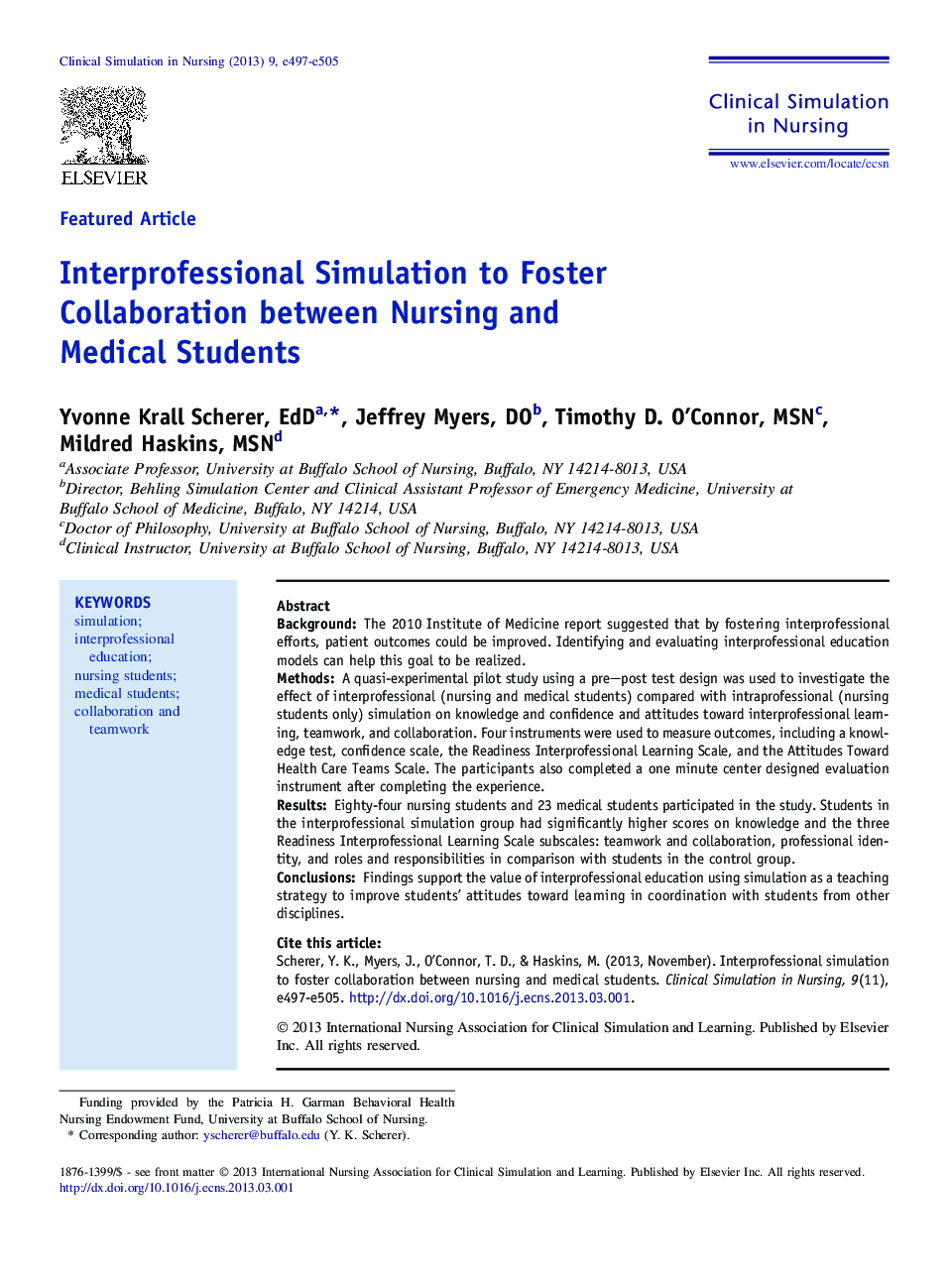| Article ID | Journal | Published Year | Pages | File Type |
|---|---|---|---|---|
| 2646160 | Clinical Simulation in Nursing | 2013 | 9 Pages |
BackgroundThe 2010 Institute of Medicine report suggested that by fostering interprofessional efforts, patient outcomes could be improved. Identifying and evaluating interprofessional education models can help this goal to be realized.MethodsA quasi-experimental pilot study using a pre–post test design was used to investigate the effect of interprofessional (nursing and medical students) compared with intraprofessional (nursing students only) simulation on knowledge and confidence and attitudes toward interprofessional learning, teamwork, and collaboration. Four instruments were used to measure outcomes, including a knowledge test, confidence scale, the Readiness Interprofessional Learning Scale, and the Attitudes Toward Health Care Teams Scale. The participants also completed a one minute center designed evaluation instrument after completing the experience.ResultsEighty-four nursing students and 23 medical students participated in the study. Students in the interprofessional simulation group had significantly higher scores on knowledge and the three Readiness Interprofessional Learning Scale subscales: teamwork and collaboration, professional identity, and roles and responsibilities in comparison with students in the control group.ConclusionsFindings support the value of interprofessional education using simulation as a teaching strategy to improve students' attitudes toward learning in coordination with students from other disciplines.
